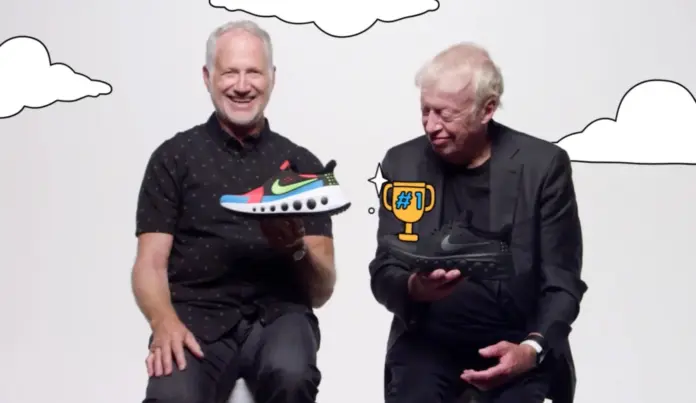According to company lore, the idea for Nike’s CruzrOne sneaker — a well-cushioned, thick-soled running shoe that debuted in 2019 — originated with a conversation between a Nike designer, Tinker Hatfield, and the company’s co-founder Phil Knight. Mr. Hatfield made the mistake of congratulating Mr. Knight on his habit of walking eight miles a day and received a swift correction from his billionaire boss.
“I was running,” Mr. Knight says dryly in a promotional video, bearing a slightly aggrieved expression. “Just running not very fast.”
Nike makes shoes for sprinters and distance runners who cover all kinds of terrain. The conversation with Mr. Knight left Mr. Hatfield with an idea to design a shoe for a large, fast-growing and often overlooked market: runners who aren’t in a hurry.
“There needs to be a shoe for the slower runner,” Mr. Knight says in the ad. “And that’s me.”
What is not said explicitly in the video is that Mr. Knight is in his 80s. Age is never mentioned in any of the CruzrOne’s marketing copy. By positioning the CruzrOne as a shoe with excellent support for runners who — for whatever reason — go at an extremely slow pace, Nike can offer a product designed for the older athlete to the general market.
It’s a perfect example of what Rob Chess, a Stanford Graduate School of Business lecturer, calls “stealth design”: a product that addresses specific needs of older consumers in a form that doesn’t scream, well, “old.”
“You basically put all these elements in that make it much more usable by an older customer, but you don’t necessarily advertise and play up those elements,” Mr. Chess said. “Or if you do, you certainly don’t position them as, you know, ‘Gee, we’re doing this for older people.’” (A Nike spokesperson declined requests for interviews.)
It’s part of a seismic shift in the way companies market to consumers who have lived past their 55th birthday. The large and rapidly expanding demographic has enormous spending power, yet it has historically been treated as a homogeneous group that spends its days either in the louche leisure of a Viagra ad or the frail dependence of a Life Alert spot.
In contrast, longevity experts said, today’s most effective marketing campaigns focus on the specific needs a product or service addresses, and the lifestyle of the person buying it — ideally without explicitly mentioning age at all.
“I still see the word ‘senior’ and ‘elderly’ too often,” said Susan Golden, the director of dciX, a program of Stanford’s Distinguished Careers Institute for midlife professionals, and a lecturer at the Stanford Graduate School of Business. “The idea is to market not to a name and not to an age, but to the stage of life or vibrancy.”
Analysis: This article discusses how businesses should approach and design for specific age groups – they should not be marketing to a specific name, but more so a stage of life. Older adults contain a great amount of our nation’s population and wealth, so it is about time that companies start paying more attention to their wants and needs, without calling them out as elderly people. Everyone, no matter their age has different wants and needs, but many groups often are ignored by major businesses and services, like banking. It is time for the banking industry to start putting more effort into accommodating old adults into their business models and start treating them equally to their younger counterparts. This reading also shows me how important language and approach is, it is one thing to design a service/product for a group but is another thing to deliver it in an understandable, accessible way. This involves thinking about language, proximity, disabilities and other key factors involved. Overall, this article helps me to understand how the delivery of my designs will be just as important as the design in general.
Citation:
Purtill, C. (2021, December 8). The key to marketing to older people? don’t say “old.” The New York Times. https://www.nytimes.com/2021/12/08/business/dealbook/marketing-older-people.html




